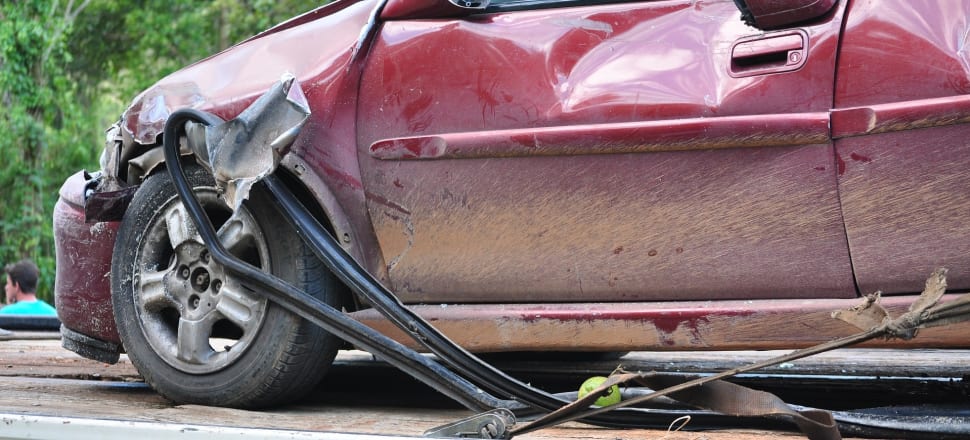
Safety standards are no longer fit for purpose and need an overhaul so the New Zealand market can keep up with new technology, transport officials warn
The transport minister has been told the vehicle standards regulatory framework is inflexible and may mean new vehicles with safe and functional features are incompatible with the rules.
The country’s least-safe vehicles make up 42 percent of the fleet, but are involved in 52 percent of crashes where there are deaths or serious injuries.
Te Manatū Waka Ministry of Transport modelling shows 196 death or serious injuries could be avoided each year by getting rid of one and two-star vehicles.
The department now wants to review how New Zealand’s entry standards can keep pace with new vehicle features, which at the same time will assist in the Road to Zero targets.
“Our vehicle standards regulatory framework was designed for when New Zealand manufactured vehicles. We no longer manufacture vehicles at scale and being prescriptive has limited benefit given we cannot influence vehicles being manufactured in other jurisdictions. At the extremes, unnecessary prescription can mean functional, safe vehicle features are not compatible with our framework.
“Our experience has been that the administrative and time costs of maintaining the system are high. We often react much later than overseas jurisdictions, and when we act, the process for mandating new features is challenging within the regulatory framework, taking a lot of time and resource.”
Officials gave the example of mandating antilock braking systems (ABS) on motorcycles, which took nearly two years of consultation and policy work, something they described as a “simple update” to the rules.
“This level of complexity is unsustainable, especially as the frequency and volume of vehicle feature changes that we may wish to regulate for is increasing. Updating standards on an ad hoc basis is likely to result in only temporary relative enhancements for vehicle quality, as the features we mandate continue to evolve and foreign regulators increasingly exceed the standards we set.
“A change in approach is needed to minimise administrative burden, encourage closer regulatory alignment with leading international markets, and promote domestic regulatory stewardship.”
“This review is overdue ... features are changing more quickly than the regulation can keep up with.” – David Crawford, Motor Industry Association
Transport Minister Michael Wood agreed there was a need to streamline the system, but did not want to see a time-consuming and costly review take place.
“Broadly, what Ministry of Transport has advised me is that the current system means it takes quite a long time often to make changes to improve our safety standards and to keep up with changes that are shifting internationally.
“So they're going to be coming back to me with some advice about how we can look to potentially streamline that system and keep up with technological changes that could really unlock safety benefits.”
Motor Industry Association chief executive David Crawford agreed the system needed to be nimbler.
“This review is overdue ... features are changing more quickly than the regulation can keep up with.
“The challenge is setting new standards. Many of the technologies on modern vehicles do not yet have agreed international standards, without which it is difficult regulate for in New Zealand.
He said policy attention on the issue would allow the industry to advocate for bringing in standards that were not here yet.
“Autonomous emergency breaking [has agreed international standards] and we have supported for some time that this becomes mandatory in new vehicles.
“This is a chance to say what’s missing.”
"We're going to have to make sure that our regulatory environment is up to date and takes advantage of the opportunities.” – Michael Wood, Transport Minister
Officials told Wood beefing up standards at the point of entry needed to be done, because consumers were not demanding safer cars.
“Entry standards are our most significant supply-side intervention that impacts what choices consumers can make. Our small market means we have limited influence on the kinds of vehicles that are manufactured and available for import. We have not historically intervened at other points in the vehicle life cycle because it is difficult and can be costly.
“We do not consider consumer preferences will sufficiently impact demand for safety features in vehicles entering the fleet by 2030.”
Wood said having entry standards that kept up internationally was also important so New Zealand didn’t end up as a dumping ground for unsafe vehicles.
“There's no doubt that there's one direction of travel here, internationally, which is for there to be an ongoing improvement in terms of the safety standards of vehicles. So you don't want to be the country that’s behind the eight ball.”
He said some unsafe vehicles would be ruled out at the point of entry with the incoming clean car standards.
Officials also pointed to the social leasing scheme and the scrap and replace scheme as ways for lower-income households to access safer vehicles.
Wood said the regulatory framework would also need to be fit for purpose to manage the likes of self-driving cars which were likely to become more popular. Noting features like lane keep assist, where the car pulls back onto the road if a driver veers off, would be included in this definition.
“That's not a fully autonomous vehicle. But it shows how the market is changing and we're going to have to make sure that our regulatory environment is up to date and takes advantage of the opportunities.”
Officials are expected to report back to the minister this month with key issues and options for a review.







